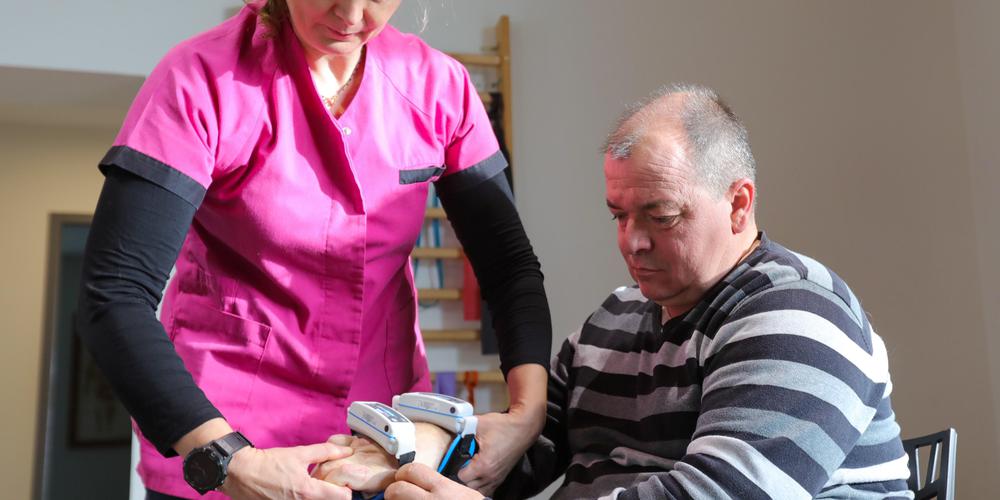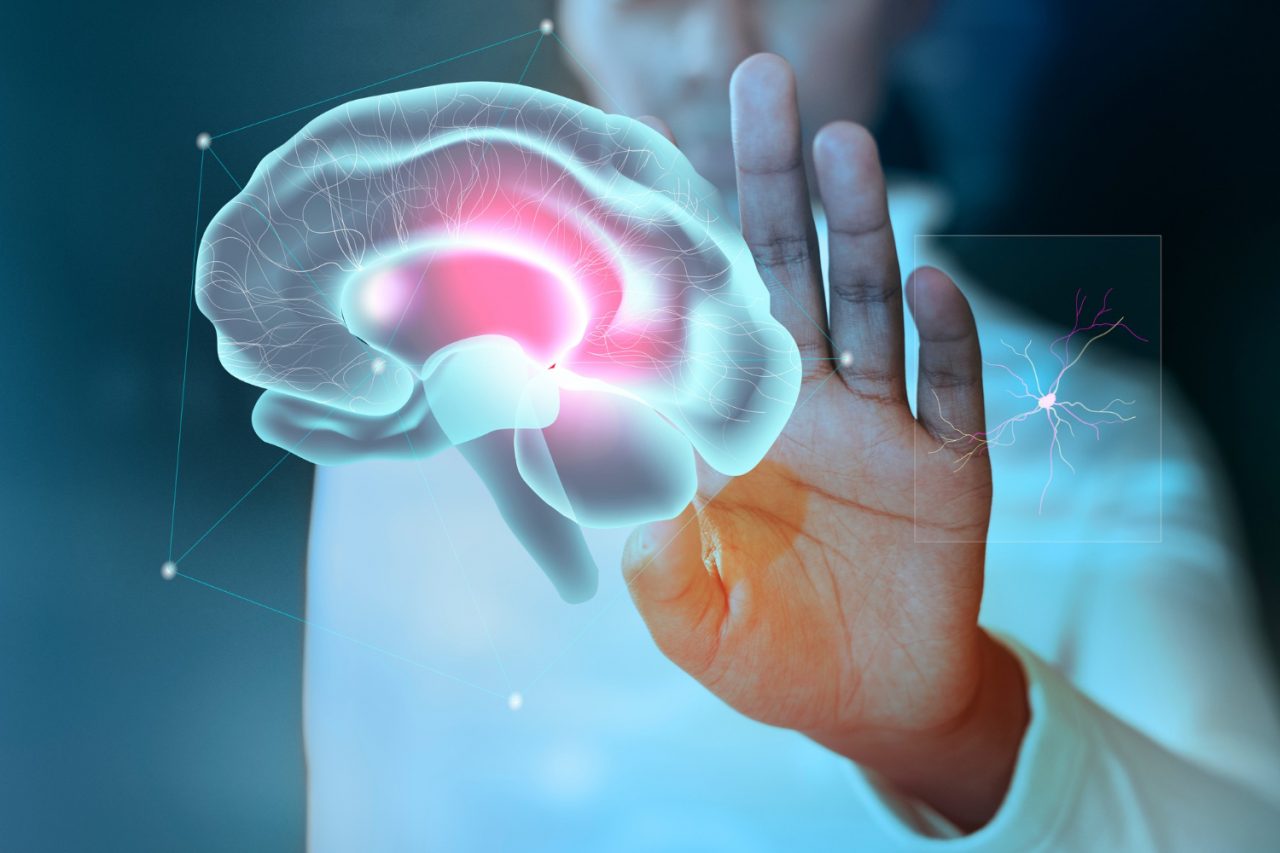The France AVC 40 association has just acquired an innovative device designed to speed up the motor recovery of stroke victims and is making it available to physiotherapy practices. A first in the Nouvelle-Aquitaine region.
“Close your eyes. With your left arm, you are going to reproduce the movements impelled by the vibrations of the device on your right arm”, suggests Vanessa Widhoff, representative of Techno Concept France, to an able-bodied fifty-year-old who is curious about the demonstration. His right arm was completely relaxed, and he handed it over to the demonstrator, who had fitted him with two bracelets. The vibrations began, with the ‘guinea pig’ flexing his left arm, raising it and unrolling it, mirroring the movements felt in his right. Three minutes later, we stopped the session, and he opened his eyes, convinced that he had moved his two upper limbs in unison. The verdict: his right arm remained motionless in Vanessa’s hands throughout the exercise. All he did was reproduce what he thought were movements but were only the illusion of them. The Vibramoov device fooled his brain.
A trick for the brain

The scene occured in Souprosse (40), in a private clinic of physiotherapist with Nicole Fourcade, Marie-Claude Minc and Jean-François Cazaucurt, active members of France AVC 40, an association dedicated to preventing strokes and supporting stroke victims. The topic of the meeting were three Vibramoov devices, recently acquired by the Landes-based association from the manufacturer Techno Concept. “An innovative device created in 2015 by this Manosque-based company in collaboration with the functional neurophysiology and integrative and cognitive neuroscience teams at the University of Marseille-Provence, and based on proprioceptive neurological stimulation, which will make it possible to re-educate a patient’s functional mobility after a stroke,” explains Nicole Fourcade, secretary of France AVC 40. But what else? “The stimulation of muscles and tendons sends the same information to the brain as if they were working. A lure that will push the brain to regenerate voluntary movements. And as brain activity is maintained, we will be able to act on the mobility and spasticity of the limb”, explains Vanessa Widhoff.
These devices speed up neuro-education for stroke victims
Jean-François Cazaucurt, 50, suffered a stroke in 2011 while working as a truck driver. An initial stay in intensive care, a month in hospital and then six months in rehabilitation… Jean-François pulls through. The right side of his brain was affected. The mobility of the whole left side of his body is damaged, and he suffered from aphasia, in other words difficulty in expressing himself. In recent days, thanks to the acquisition of France AVC 40. Jean-François, who has since recovered his speech, has been benefiting from the Vibramoov and, at the rate of two sessions a week, has been increasing the number of exercises with his physiotherapist, Véronique Deprez, in Souprosse.
And with her finger raised in front of the Vibramoov screen, Véronique chooses one of the four areas of work offered by the device: mobility to reinitiate movement, tonicity to regain muscle strength, spasticity to regulate muscle activity or antalgy to reduce pain. Like many stroke victims, Jean-François has an immobilised right arm, his hand tense and his fingers curled up. His physio chose to work on spasticity. As the vibrations progressed, the patient’s hand loosened and the fingers could be relaxed by the professional. Ten minutes later, with the stimulator back in its case, Jean-François was able to extend the index finger of his hand. His brain has memorised the stimulation and transmitted it to his finger…
Contact the association : franceavc40@gmail.com or by phone +33 6 70 40 81 55.

